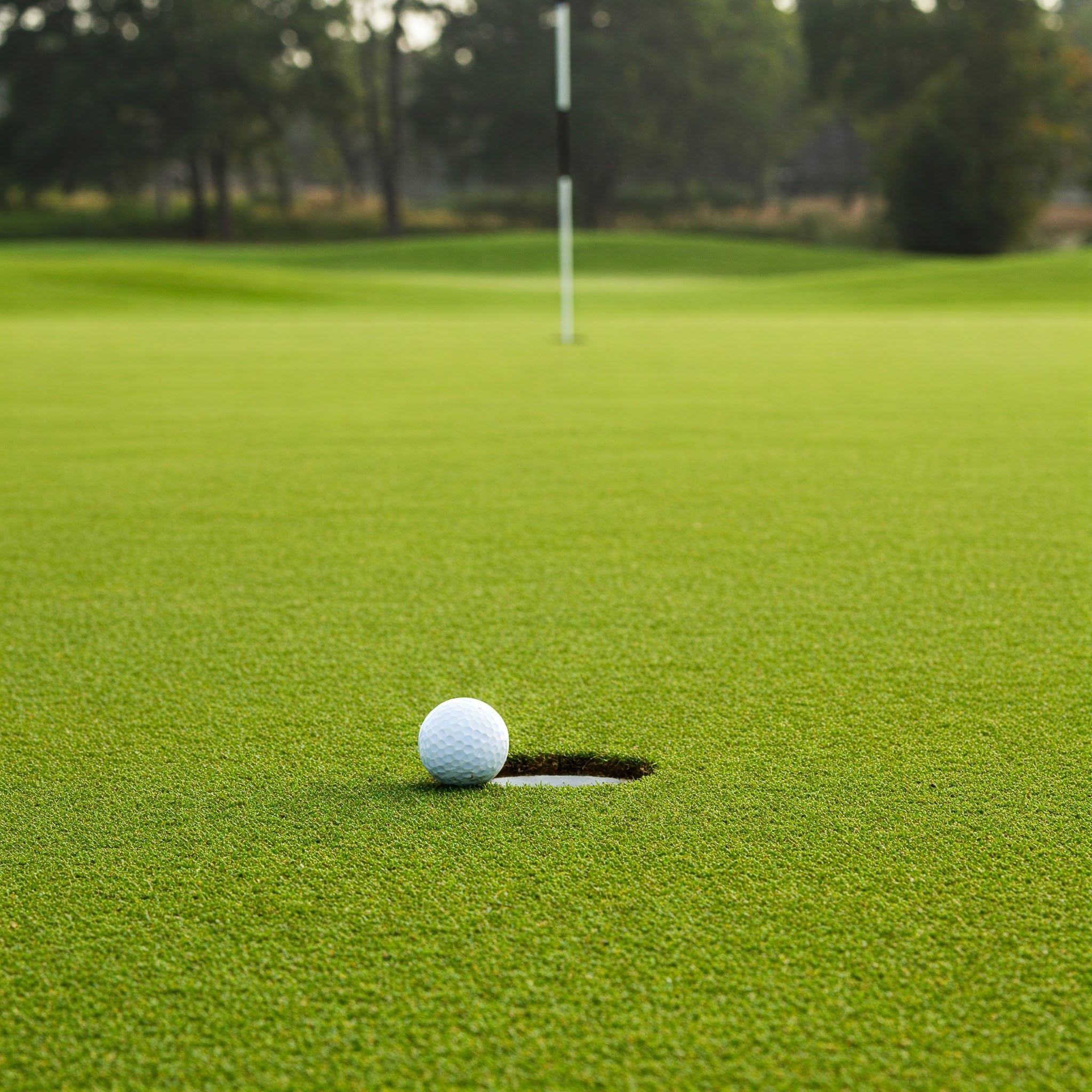️♂️ Welcome to the ultimate guide on golf green excellence! Whether you’re a golf course superintendent, an avid golfer looking to understand more about the playing surface, or a homeowner dreaming of installing a putting green in your backyard, this comprehensive resource covers everything you need to know about golf green fundamentals, maintenance, and optimization.
As a golf course management professional with over 15 years of experience, I’ve seen firsthand how the quality of a golf green can make or break the playing experience. Consequently, understanding the intricacies of these specialized turf areas is essential for anyone serious about the game.
Throughout this article, we’ll explore the science behind golf green construction, maintenance techniques used by professionals, and practical advice for achieving tour-quality putting surfaces. Furthermore, we’ll discuss how environmental factors impact your golf green and provide actionable tips you can implement immediately.
Understanding Golf Green Fundamentals
A golf-green is more than just a patch of short grass. In reality, it’s a sophisticated system designed for specific performance characteristics. To begin with, let’s clarify what makes a golf-green different from other turf areas.
What Exactly Is a Golf Green?
The golf green is the culmination of each hole on a golf course where the flagstick and cup are located. Additionally, it’s the area where golfers use their putters to complete the hole. The United States Golf Association (USGA) has established specific standards for golf-green construction that courses throughout America follow.
✅ Golf greens are typically mowed to heights between 0.100 and 0.125 inches
✅ Professional tournament greens may be cut as low as 0.080 inches
✅ Most golf greens in the USA range from 5,000 to 7,000 square feet in size
✅ The average golf green speed, measured with a Stimpmeter, ranges from 9 to 12 feet
The primary purpose of a golf green is to provide a smooth, consistent surface for putting. Nevertheless, golf course architects often design greens with subtle (or sometimes dramatic) contours to create challenging putting scenarios that test a golfer’s skill and reading ability.
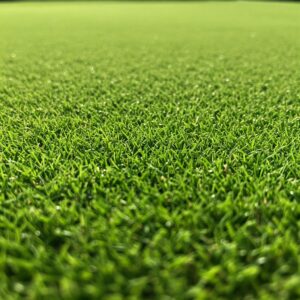
The Science Behind Golf Green Construction
Modern golf green construction follows specific methodologies to ensure proper drainage, root development, and playing consistency. The most widely adopted standard is the USGA method, which specifies a layered system:
- ️ Drainage Layer: 4 inches of gravel or pea stone at the base
- Intermediate Layer: 2-4 inches of coarse sand to prevent soil migration
- Root Zone Mix: 12-14 inches of specially formulated sand/soil mixture
- Turf Layer: Specialized bentgrass varieties bred for putting green use
Interestingly, a properly constructed golf-green actually contains only about 5-10% soil. The vast majority is sand, which provides excellent drainage characteristics. Subsequently, this design prevents compaction and allows for the deep, healthy root development necessary for resilient turf.
Types of Golf Green Grasses
The selection of appropriate grass species is crucial for golf-green success. Different regions of the USA require different grass types based on climate considerations. Therefore, choosing the right variety for your location is essential.
Cool-Season Grasses for Northern Regions
In the northern United States, cool-season grasses dominate golf-green installations:
- Creeping Bentgrass – The gold standard for premium golf greens
- Annual Bluegrass (Poa annua) – Often naturally invades and becomes dominant
- Velvet Bentgrass – Less common but extremely fine-textured
Creeping bentgrass varieties like Penn A-1 Bentgrass Seed have revolutionized golf-green quality in cooler climates. These advanced cultivars offer improved disease resistance, better heat tolerance, and exceptional density for smooth putting surfaces.
Warm-Season Options for Southern Golf Greens
Golf courses in southern regions typically utilize these warm-season grasses:
- Bermudagrass – Dominant in the South with excellent heat tolerance
- TifEagle Bermudagrass – Ultradwarf variety with superior density
- ️ MiniVerde Bermudagrass – Provides tournament-quality putting surfaces
- Seashore Paspalum – Excellent salt tolerance for coastal courses
For southern golf-green installations, Certified TifEagle Bermudagrass Sprigs offer excellent heat tolerance while maintaining the fine texture needed for premium putting surfaces. However, these grasses typically require more intensive management practices.
Transitional Zone Challenges
Golf courses in the transitional zone (mid-Atlantic and parts of the Midwest) face unique challenges. Neither cool-season nor warm-season grasses are perfectly adapted to these regions. As a result, golf course superintendents must make difficult choices:
- ⚖️ Creeping Bentgrass – Struggles during hot summers but provides better winter quality
- ⚖️ Bermudagrass – Excellent summer performance but may go dormant in winter
- ⚖️ Hybrid Approaches – Some courses overseed bermudagrass with cool-season varieties for year-round green appearance
The Transitional Zone Golf Green Management Guide provides comprehensive strategies for maintaining quality putting surfaces in these challenging regions. Additionally, newer grass varieties with improved heat and cold tolerance continue to make management easier.
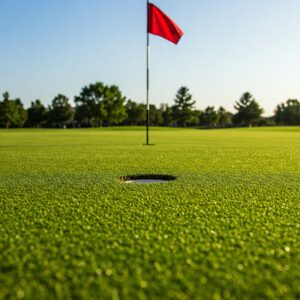
Essential Maintenance Practices for Perfect Golf Green Conditions
Maintaining a golf-green requires a comprehensive program of cultural practices. Furthermore, the frequency and intensity of these practices must be adjusted based on growing conditions, play intensity, and turf health.
Regular Mowing Techniques
Proper mowing is the foundation of golf-green management:
- ✂️ Height: Typically maintained between 0.100-0.125 inches
- ✂️ Frequency: Daily mowing during peak growing season
- ✂️ Equipment: Specialized walking or triplex reel mowers
- ✂️ Direction: Alternating mowing directions to prevent grain
Professional-grade mowers like the Toro Greensmaster Flex 2120 Walking Greens Mower provide the precision cut needed for tournament-quality golf-green surfaces. Moreover, these machines offer adjustable settings to adapt to different grass types and seasonal conditions.
For home putting greens, the California Trimmer RL207H-GX120 Classic 7-Blade Reel Mower offers an excellent balance of quality and affordability, delivering professional results for the dedicated golf enthusiast.
Watering Strategies for Optimal Golf Green Health
Proper irrigation is critical for golf-green health and playability:
✅ Deep, infrequent watering encourages deeper root development
✅ Hand watering may be necessary for problem areas or sloped portions
✅ Early morning irrigation is preferred to minimize disease pressure
✅ Moisture meters help determine precise watering needs
The Rain Bird Golf Irrigation Control System allows for precise water management, ensuring your golf-green receives exactly what it needs without waste. Additionally, smart controllers can adjust based on weather data, optimizing water usage.
For smaller installations, the Orbit B-hyve Smart Sprinkler Controller offers affordable automation with weather-based adjustments perfect for residential putting greens.
Fertilization Programs for Golf Green Excellence
Providing balanced nutrition is essential for golf-green health:
- Nitrogen: 2-4 lbs per 1,000 sq ft annually, applied in small, frequent doses
- Phosphorus: Typically limited to establishment periods
- Potassium: Often applied at rates equal to or greater than nitrogen
- Micronutrients: Regular soil testing determines specific needs
Professional golf course superintendents often use Andersons Professional PGF Complete 16-4-8 Fertilizer for balanced nutrition with controlled release. This premium product ensures steady, consistent growth without the flush growth that can compromise putting quality.
Advanced Cultural Practices
Beyond basic maintenance, several specialized practices are essential for premium golf-green performance:
Aerification
Core aerification is vital for:
- Relieving soil compaction
- Improving air exchange to roots
- Removing accumulated organic matter
- Enhancing water infiltration
The Billy Goat PL1801V Plugr Aerator provides professional-quality core aerification for smaller golf-green installations. Moreover, its self-propelled design makes the process more manageable for maintenance staff.
Topdressing
Regular sand topdressing:
- Smooths the putting surface
- Dilutes organic matter
- Firms the playing surface
- Enhances turf recovery
For precise application, the Spyker Ergo-Pro Push Spreader delivers even distribution of topdressing sand, ensuring consistent coverage across your golf-green.
Verticutting and Grooming
These practices control grain and thatch by:
- Removing horizontal growth
- Encouraging upright growth habit
- Improving putting surface trueness
- Reducing organic matter accumulation
⚔️ Common Golf Green Problems and Solutions
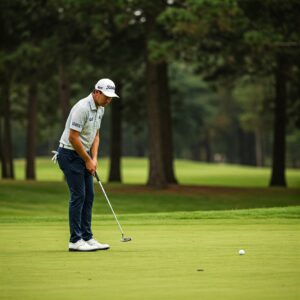
Even with proper maintenance, golf greens can develop various issues. Identifying and addressing these problems quickly is essential for maintaining quality playing conditions.
Disease Management on Golf Greens
Golf green turf is particularly susceptible to fungal diseases due to its low mowing height and high stress levels:
| Disease | Symptoms | Conditions | Management |
|---|---|---|---|
| Dollar Spot | Small, silver-dollar sized spots | Warm days, cool nights, leaf wetness | Fungicides, proper nitrogen, reduce leaf wetness |
| Brown Patch | Circular brown areas with smoke-ring borders | High humidity, nighttime temperatures >65°F | Improve air circulation, fungicides, reduce leaf wetness |
| Anthracnose | Yellow to orange patches with black fruiting bodies | High heat, compacted soils, low nitrogen | Raise mowing height, increase nitrogen, reduce stress |
| Pythium | Greasy, water-soaked spots that spread rapidly | High temperatures, extended leaf wetness | Improve drainage, specific fungicides, reduce irrigation |
For preventative disease management, Heritage G Fungicide offers broad-spectrum protection against multiple diseases common to golf greens. Furthermore, its granular formulation makes application straightforward for maintenance staff.
Insect Challenges
Various insects can damage golf green turf:
- White Grubs: Root-feeding larvae of various beetle species
- Annual Bluegrass Weevils: Particularly problematic in the Northeast
- Cutworms: Night-feeding caterpillars that clip grass blades
- Mole Crickets: Damaging in southern regions through tunneling and feeding
For effective control of multiple turf insects, Merit 0.5G Insecticide provides season-long protection when applied at the correct timing. Additionally, its systemic activity protects both above and below-ground portions of turf plants.
Weed Management Strategies
While properly maintained golf-greens typically have few weed issues, some problematic species can appear:
- Poa annua: Often considered a weed in bentgrass greens
- Crabgrass: Can invade weakened areas along edges
- Moss: Problematic in shaded, moist conditions
- Algae: Forms slick mats in wet, compacted areas
For selective control of certain weeds in established golf greens, Tenacity Turf Herbicide can be used at reduced rates for specific situations. However, prevention through proper cultural practices remains the best approach to weed management.
Creating a Backyard Golf Green
Many golf enthusiasts dream of having their own putting green at home. While not equivalent to professional golf greens, homeowners can create satisfying practice areas with the right approach.
Natural Turf Options for Home Golf Greens
Creating a natural grass putting green requires:
- ☀️ Sufficient Sunlight: Minimum 6-8 hours daily
- ☀️ Proper Drainage: Modified soil profile similar to professional greens
- ☀️ Regular Maintenance: Frequent mowing, fertilization, and pest management
- ☀️ Specialized Equipment: Reel mower for proper cutting height
For DIY installation, the USGA Home Putting Green Construction Guide provides detailed specifications adapted for residential use. Moreover, many professional landscapers now offer specialized golf-green installation services.
Synthetic Alternatives for Low-Maintenance Golf Greens
Artificial turf options offer advantages for homeowners:
- ⏱️ Reduced Maintenance: No mowing, fertilizing, or pesticides
- ⏱️ Consistent Performance: Playable in all weather conditions
- ⏱️ Durability: Typically lasts 8-15 years with proper care
- ⏱️ Design Flexibility: Can be installed in areas unsuitable for natural turf
The SYNLawn Dave Pelz GreenMaker Putting Green System offers professional-grade synthetic putting surfaces for home installation. Additionally, its modular design allows for customization to fit various space requirements.
DIY Golf Green Projects
For budget-conscious golfers, several DIY approaches can create functional practice greens:
- Modified Lawn Areas: Intensively managed sections of existing turf
- Fraze Mowing: Aggressive scalping followed by overseeding with putting green seed
- Container Greens: Raised bed installations with proper soil mix
- Hybrid Systems: Combining natural base with synthetic surface
To get started on your DIY project, the Outside Pride Creeping Bentgrass Seed Blend provides a high-quality seed mix specifically formulated for putting green use. Furthermore, this professional-grade seed offers excellent germination rates and turf density.
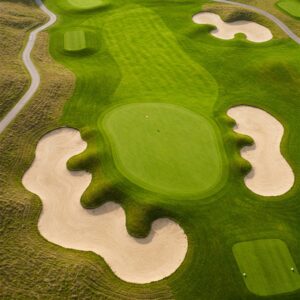
Advanced Golf Green Management Techniques
Professional golf course superintendents employ sophisticated techniques to achieve tournament-quality conditions.
Precision Tools for Golf Green Assessment
- Stimpmeter: Measures green speed consistency
- TruFirm: Quantifies surface firmness
- Moisture Meters: Provides precise irrigation guidance
- Digital Level: Measures slopes and contours
- Infrared Thermometer: Monitors surface temperatures
For precise moisture management, the FieldScout TDR 350 Soil Moisture Meter provides accurate readings of soil moisture content, helping prevent both drought stress and overwatering of your golf green.
Performance-Enhancing Products
Various specialty products can improve golf-green quality:
- Plant Growth Regulators: Control vertical growth while increasing density
- Wetting Agents: Improve water penetration and distribution
- Biostimulants: Enhance root development and stress tolerance
- Soil Amendments: Modify physical and chemical properties
The Quali-Pro T-Nex Plant Growth Regulator helps create denser, more consistent putting surfaces while reducing mowing frequency. Additionally, treated turf typically shows improved drought and heat tolerance.
Tournament Preparation Strategies
Special practices are employed to prepare golf-greens for competitive play:
- Double-Cutting: Mowing twice in different directions
- Rolling: Smoothing the surface for increased speed
- Firming: Reducing irrigation to create firmer surfaces
- Detail Work: Hand-watering dry spots, hand-mowing borders
For tournament-level rolling, the True-Surface Vibratory Greens Roller provides consistent compaction without damaging turf. Moreover, regular rolling can allow for higher mowing heights while maintaining desired green speeds.
Environmental Considerations for Sustainable Golf Green Management
Modern golf-green management must balance performance with environmental responsibility:
Water Conservation Approaches
- Moisture Sensors: Apply water only when needed
- Deficit Irrigation: Slight under-watering to promote deeper roots
- Improved Sprinkler Technology: More efficient water delivery
- Drought-Tolerant Varieties: Grasses with lower water requirements
The Hunter MP Rotator Sprinkler Heads provide significantly improved water efficiency over traditional sprinklers. Additionally, their slower application rate reduces runoff and improves infiltration.
Reduced Chemical Approaches
- IPM Programs: Integrated Pest Management to minimize chemical use
- Biological Controls: Beneficial organisms for pest management
- Organic Fertilizers: Slow-release nutrition from natural sources
- Cultural Optimization: Proper practices to reduce stress and disease pressure
For environmentally-conscious fertilization, Milorganite 0636 Organic Nitrogen Fertilizer provides slow-release nutrition from organic sources. However, application rates may need adjustment for putting green use.
Energy Efficient Maintenance
- ⚡ Electric Equipment: Transitioning from gas-powered to electric
- ⚡ Solar Charging: Renewable energy for maintenance buildings
- ⚡ Route Optimization: Efficient maintenance patterns
- ⚡ Precision Application: Targeted treatments versus blanket applications
The emerging Toro eTriFlex Hybrid Electric Riding Greens Mower represents the future of energy-efficient golf green maintenance. Furthermore, its quiet operation allows for earlier morning mowing without disturbing neighbors.
Comparison Table: Golf Green Grass Options
| Grass Type | Climate Zone | Maintenance Level | Drought Tolerance | Disease Resistance |
|---|---|---|---|---|
| Creeping Bentgrass | Cool/Transition | Very High | Moderate | Moderate |
| TifEagle Bermudagrass | Warm/Transition | High | High | Good |
| MiniVerde Bermudagrass | Warm | High | High | Good |
| Seashore Paspalum | Warm/Coastal | Moderate-High | High | Moderate |
Transform Your Golf Experience Today!
Ready to create your perfect putting surface? The products mentioned throughout this guide have been carefully selected for quality and performance. Click on any highlighted item to check current pricing and availability—your path to golf green excellence is just a click away!
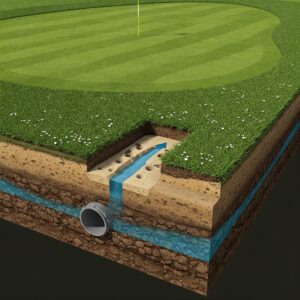
Conclusion: Mastering Your Golf Green
Understanding and maintaining a quality golf green requires dedication, knowledge, and the right approach. Whether you’re managing a professional course or creating a backyard practice area, the principles remain similar. By focusing on proper construction, appropriate grass selection, and consistent maintenance practices, you can create and maintain exceptional putting surfaces.
Remember that golf green management is both an art and a science. While technical knowledge is essential, developing an intuitive feel for your specific conditions will ultimately lead to the best results. Most importantly, be patient—quality turf development takes time, and even the best golf greens require constant attention and adjustment.
I hope this comprehensive guide has provided valuable insights into the fascinating world of golf green management. By implementing these principles and techniques, you’ll be well on your way to creating and maintaining exceptional putting surfaces that enhance the golf experience for yourself and others.
More FQAs:
❓ What is a golf green made of?
✅ A golf green is typically composed of tightly mowed grass like bentgrass or Bermuda, designed to provide a smooth, fast surface for putting…
❓ How much does it cost to build a backyard golf green?
✅ Building a backyard golf green can cost anywhere from $4,000 to over $20,000, depending on size, materials, and whether it's synthetic or natural…
❓ What is the ideal size for a home golf green?
✅ Most backyard golf greens range from 500 to 1,500 square feet, offering enough space for realistic putting practice without taking up your entire yard…
❓ Are synthetic golf greens worth it?
✅ Synthetic golf greens are low-maintenance and weather-resistant, making them a great investment for consistent play and long-term durability at home…
❓ How do you maintain a real golf green?
✅ Maintaining a real golf green involves regular mowing, aeration, watering, and fertilizing to keep the surface healthy and playable year-round…
Recommended for You:
- 10 Stunning Golf Cart Wraps to Transform Your Ride in 2025
- Golf Cart Garage: 10 Essential Solutions for Secure Storage
- 7 Best Golf Cart Fan Options for Ultimate Cooling in 2025
Disclaimer: This article contains affiliate links. If you purchase products through these links, we may earn a small commission at no additional cost to you.

